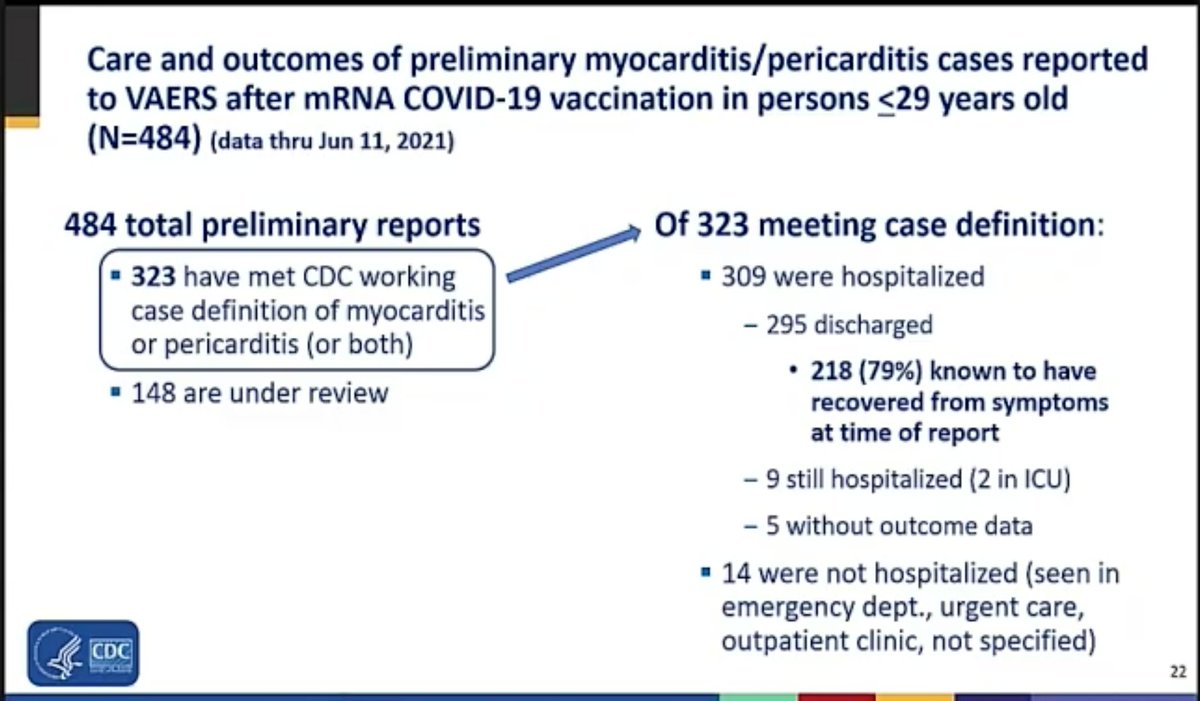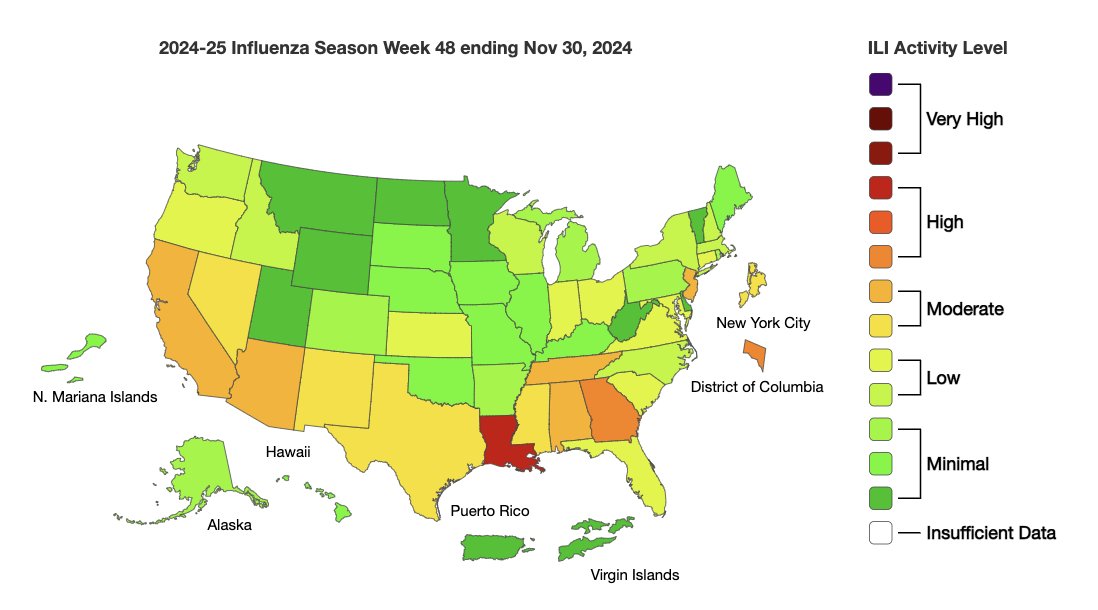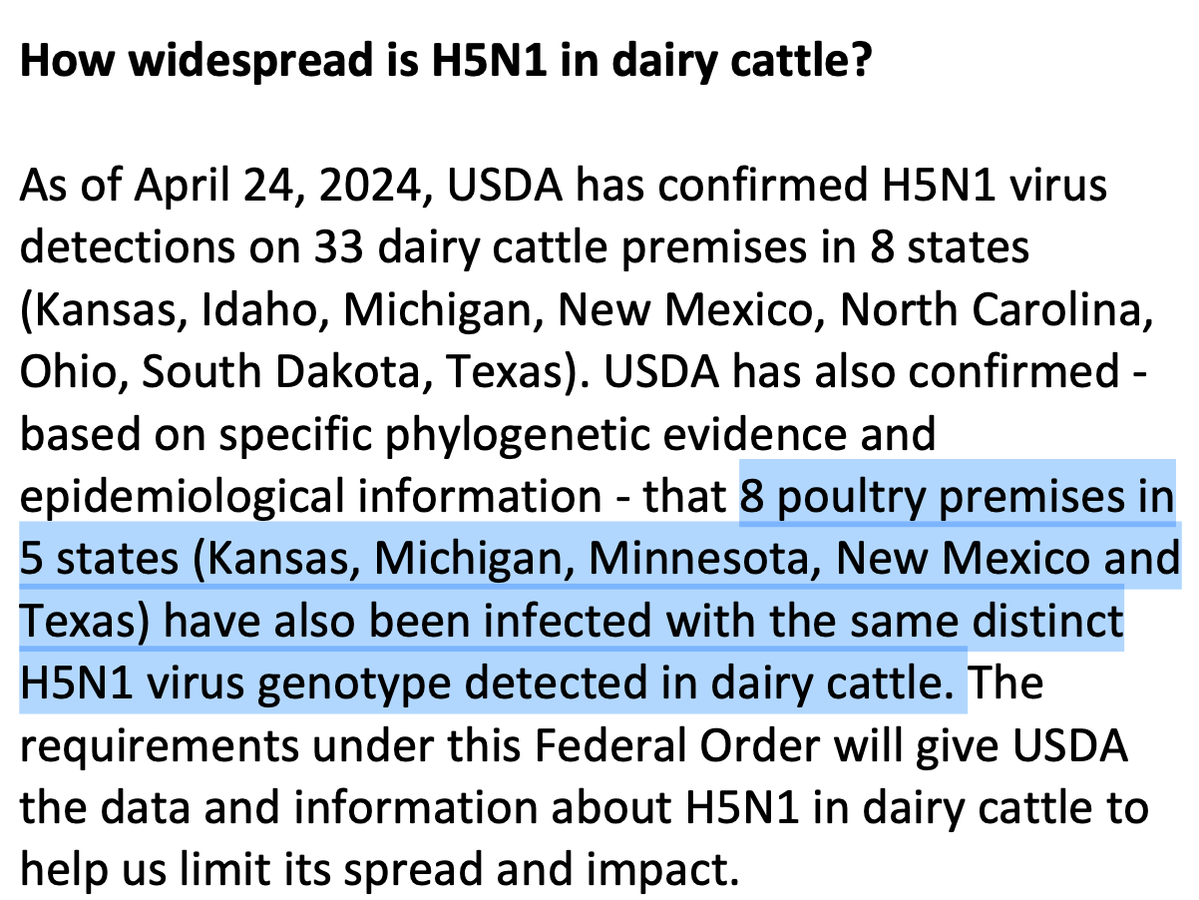1. The impact of #Covid19 vaccines on the US epidemic. This graphic, from today's #ACIP meeting, speaks volumes.
I will try to tweet from the meeting, but it might be intermittent. First up: myocarditis & pericarditis in some people who've received mRNA vaccines.
I will try to tweet from the meeting, but it might be intermittent. First up: myocarditis & pericarditis in some people who've received mRNA vaccines.

2. #ACIP will also be discussing #Covid19 booster shots. Committee was just told it's not yet clear *if* boosters will be needed, but that it's important to plan for boosters if it becomes clear they are needed.
3. #ACIP hearing an explanation of traditional (ie not vaccine-related) myocarditis & pericarditis. The former is mostly seen in males & rates are higher in 15-18 yos than in younger children. 

4. #ACIP hears the myocarditis cases that have been linked to receipt of mRNA vaccines seem to be less severe than is seen with traditional myocarditis. They'll need to follow people for months to get a fuller picture of the impact, but most cases are mild & resolve within days.
5. The clinical course seems to be shorter, and treatments needed are more minimal, Dr. Matthew Oster of @CDCgov tells #ACIP about the myocarditis cases seen in people after receipt of mRNA vaccines.
6. @CDCgov's Tom Shimabukuro is now laying out details of the myocarditis cases. Most are individuals are in late teens, early 20s. More after dose 2 than dose 1. So far there've been a total of 1,226 cases. 
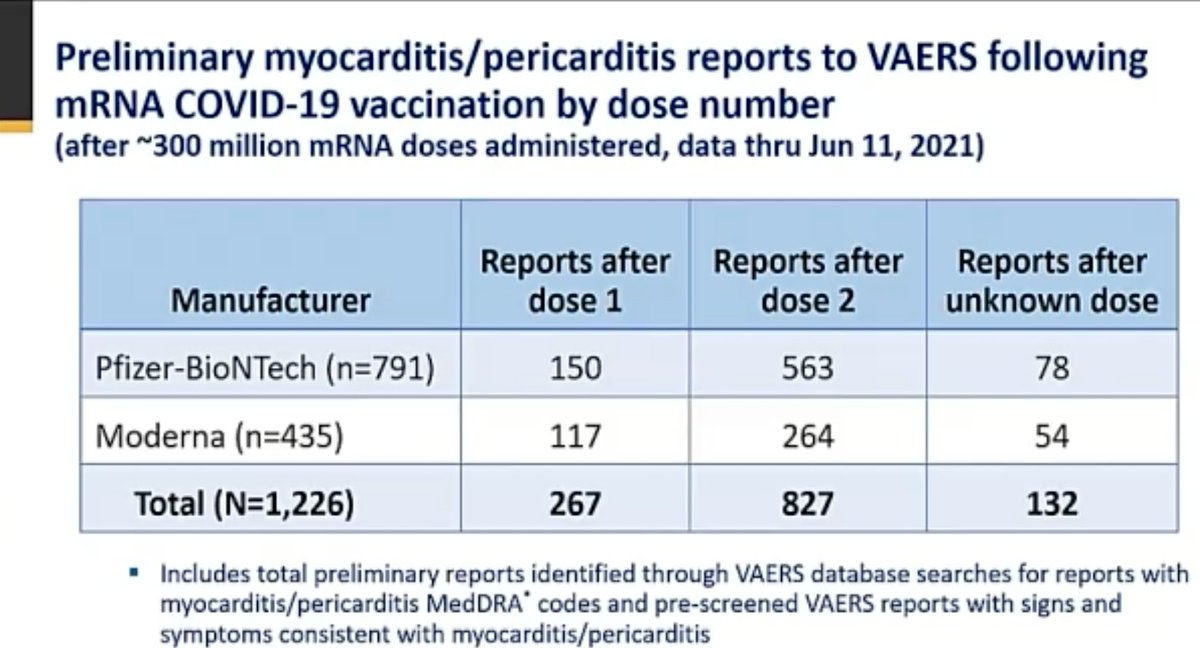
8. Interesting slide -- expected rates of myocarditis & pericarditis by age compared to what is actually being seen in people post mRNA vaccination. 

9. This slide shows rates of reports of myocarditis & pericarditis per million doses of mRNA vaccine doses given. Top section is the aggregate of the 2 vaccines, lower sections are by brand, ie Pfizer or Moderna. #ACIP 

10. This is @CDCgov's analysis of the risks & benefits of 2nd dose vaccination with mRNA vaccines. Big benefits, though a small number of myocarditis cases are expected to occur.
CDC notes there is no authorized alternative vaccine available in the US for teens at this time.
CDC notes there is no authorized alternative vaccine available in the US for teens at this time.
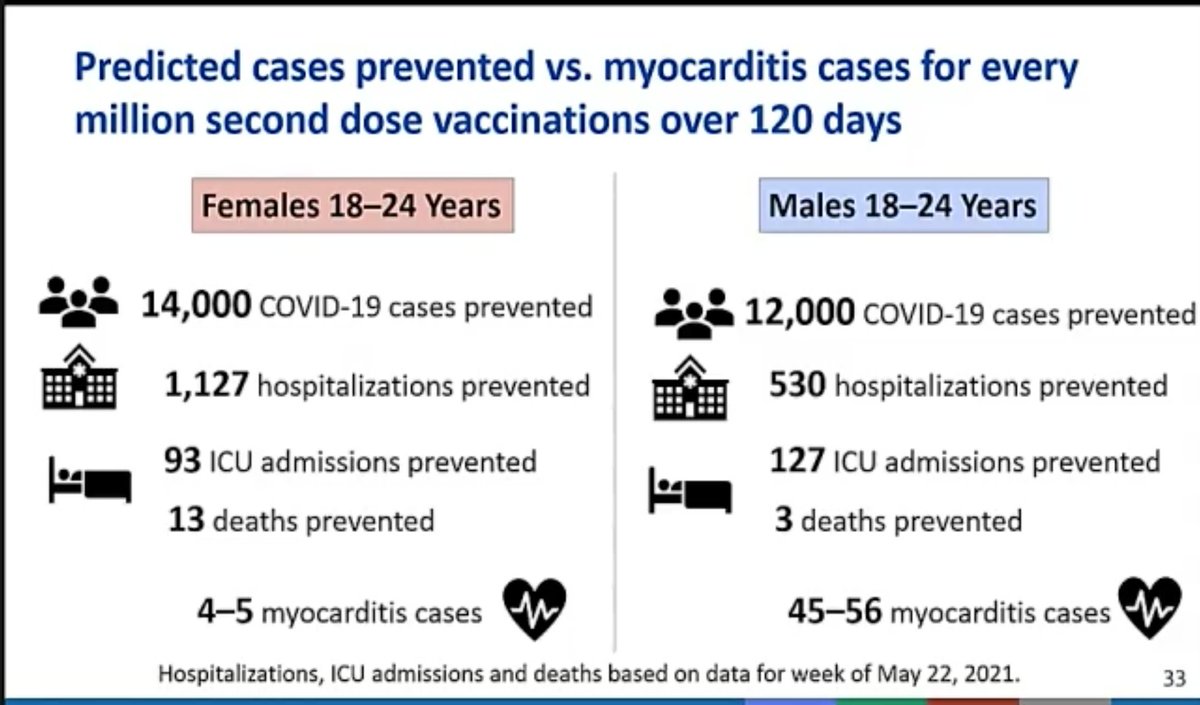
11. Here are the proposed @CDCgov recommendations for use of mRNA vaccines in adolescents & young adults. Note if myocarditis occurs after a first dose, the 2nd should be deferred until more information is know, though if the heart has recovered, dose 2 could proceed. 
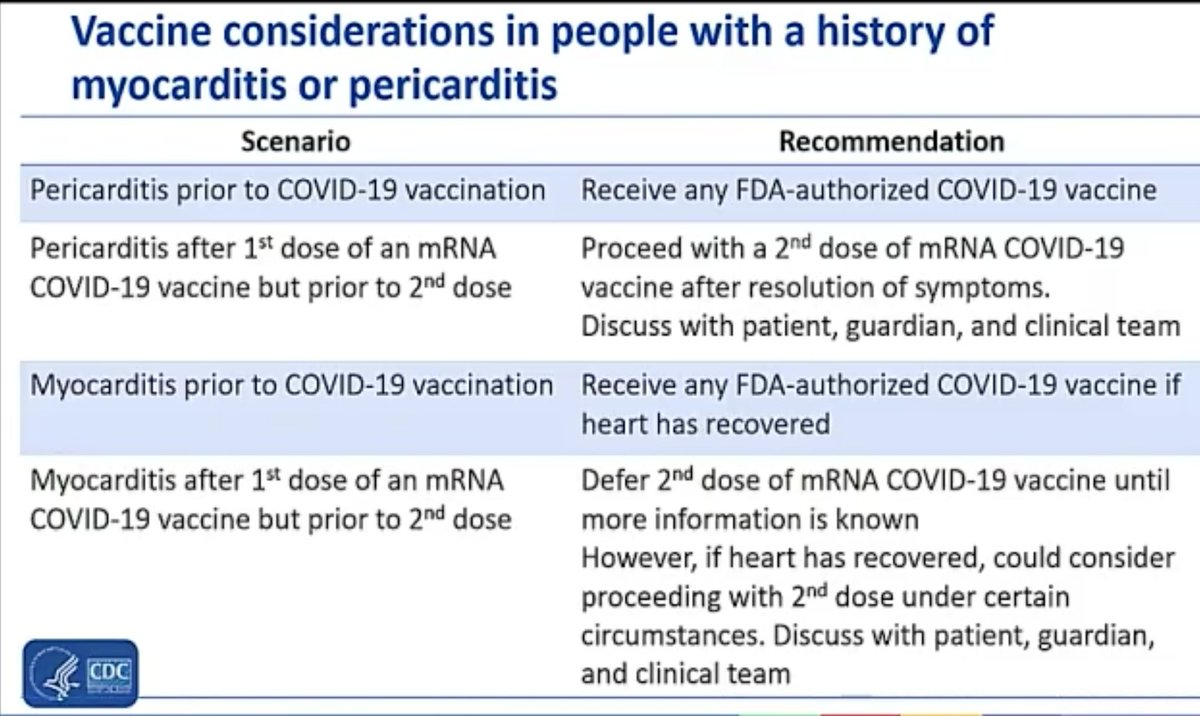
12. @US_FDA's Doran Fink says FDA thinks that warnings about the possible risk of myocarditis & pericarditis for teens-young adults after mRNA vaccination should be included in the Pfizer & Moderna information sheets for MDs & vaccine recipients.
Said FDA will "move rapidly."
Said FDA will "move rapidly."
13. Here's my colleague @DrewQJoseph's article on today's #ACIP discussion on myocarditis following mRNA vaccination.
statnews.com/2021/06/23/off…
statnews.com/2021/06/23/off…
15. @CDCgov's Sara Oliver, a wiz at explaining things, is now laying out what's known about the need for boosters & the questions that will need to be answered as authorities assess whether we're going to need additional doses in future & when. #ACIP #Covid19 

16. Aside: People are complaining about vaccine uptake in the US & the current failure to get to 70% of the population. But given that #Covid19 vaccination efforts only started in December these percentages are quite incredible. 

16. Oliver said most data so far show current vaccines are effective at preventing severe #Covid19 infections, even when infections are cause by variants of concerned, ie mutated viruses. It may be certain populations will be more likely to need boosters, she said. #ACIP 
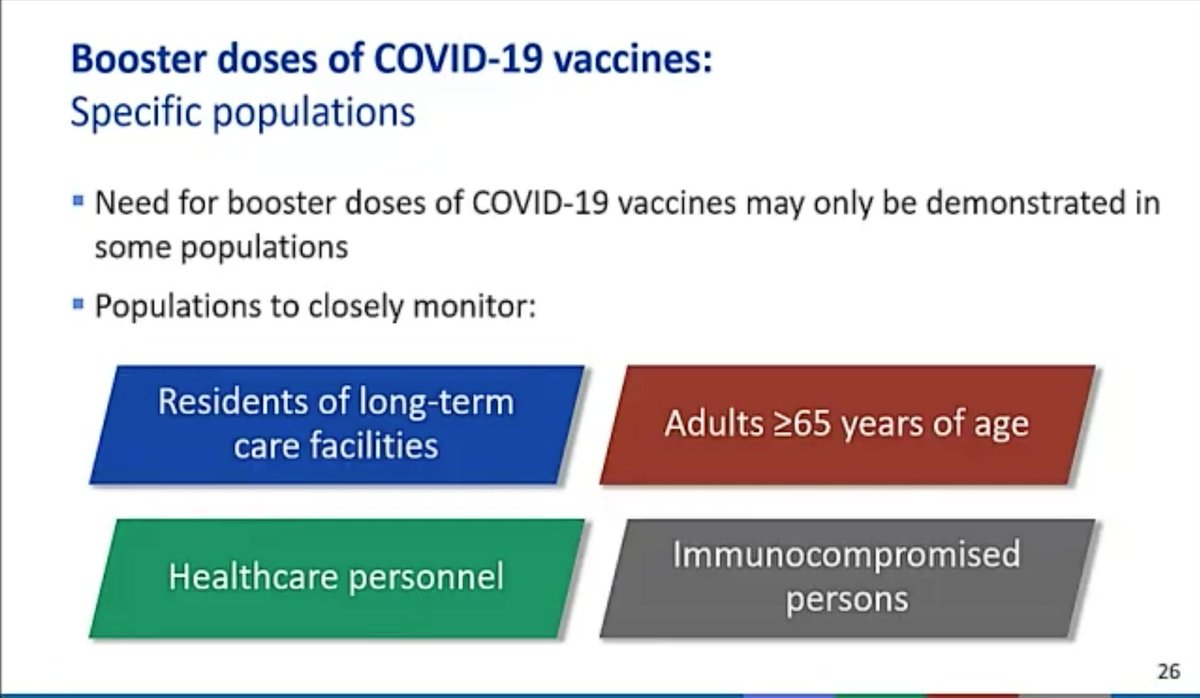
17. Interesting presentation of data on how various people who are immunocompromised respond to 2 doses of mRNA, broken down by cause of their immunocompromised status. #ACIP #Covid19 
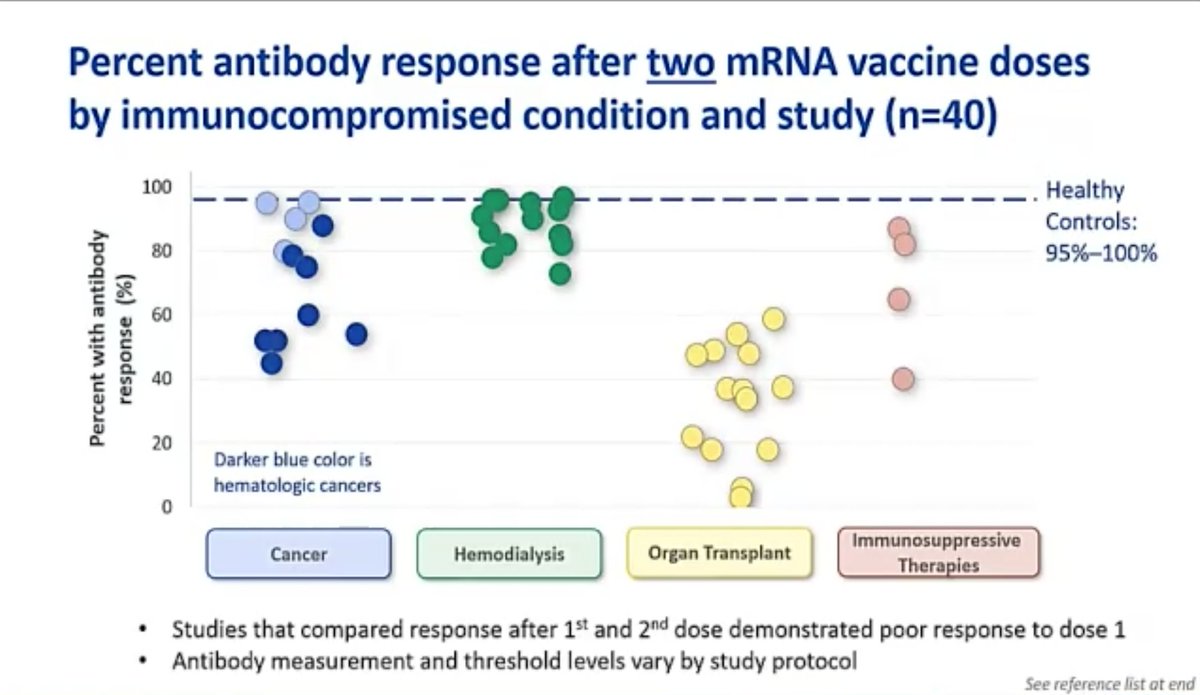
18. #ACIP's Keipp Talbot makes an impassioned pitch for the US to do more to help vaccinate the rest of the world against #Covid19, both because it's the right thing to do, but also to slow development of variants that could erode the protection of existing vaccines.
19. @CDCgov's Amanda Cohn, who is the exec secretary of #ACIP, says CDC is looking for guidance from the committee as to when decisions on boosters should be taken? Is it acceptable to wait until an uptick of cases among vaccinated people is seen?
20. @CDCgov is looking for guidance from #ACIP members about when to move on booster doses. They just asked: Do ACIP members think there should be thresholds that would trigger a decision? If vaccine efficacy dropped to X% in nursing homes, would that necessitate boosters?
21. There was no vote on the boosters question, just observations from some #ACIP members. Most leaned towards the need for evidence of a need for boosters before the US goes down that path — though earlier action might be taken for immunocompromised people. Meeting adjourned.
• • •
Missing some Tweet in this thread? You can try to
force a refresh

